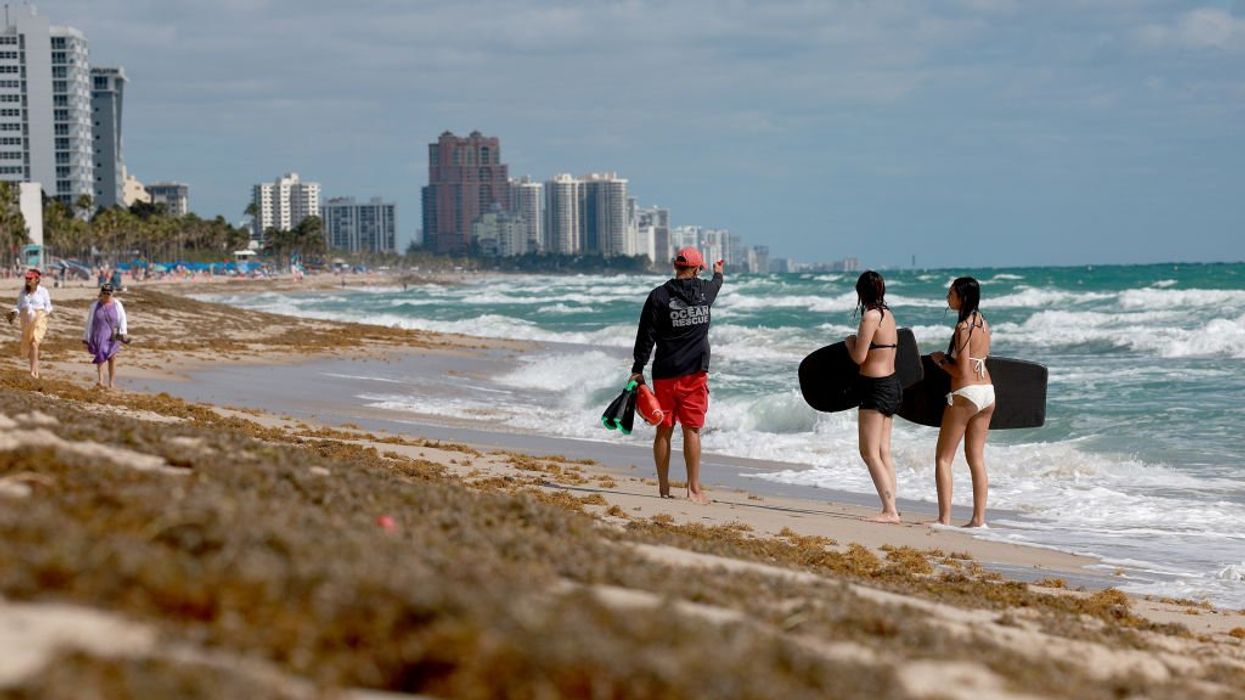
Photo by Joe Raedle/Getty Images

Brown bunches of smelly seaweed have already washed up on Florida's beaches as a 5,000-mile-wide raft of Sargassum creeps across the Caribbean, WESH and other outlets reported.
"We’re calling it 'Seaweed-ageddon' because of the size and scope of this," Space Coast Tourism Office executive director Peter Cranis told the outlet.
This year's clump is so large it can be seen from space.
"What other areas have done is literally trucking it off the beach with equipment to put it in dump trucks, taking it off the beach," Cranis also said, noting it has not hit central Florida as badly as other areas.
According to Cranis, it is a matter of "when," not "if" the mass presents a significant issue.
The seaweed is an algal species in the genus Sargassum. The seaweed "blob" is called the Great Atlantic Sargassum Belt. The belt is about twice as wide as the United States.
"This is the new normal, and we’re going to have to adapt to it," Brian Lapointe, an oceanographer at Florida Atlantic University who has studied seaweed for decades told Scientific American.
The seaweed problem, which appeared earlier than usual this year, arrives amid another, possibly more worrisome concern, the toxic "red tide." The red tide can cause significant health problems. Florida's Department of Health issued an alert on the matter in February.
Sargassum that is still light in color is fresh, and likely has small marine animals living in it. Those small marine animals can cause skin irritation and itching.
In addition, as it decomposes, Sargassum produces hydrogen sulfide gas. The gas can cause eye, nose, and throat irritation. People with asthma or other respiratory problems may be more sensitive to it, according to the Florida's Department of Health and Human Services.
Both the red tide and Sargassum are associated with foul odors, but for different reasons. The red tide chokes marine animals, which then wash up on the beach and emit a stench as they decompose. Sargassum itself smells of rotten eggs as it washes up on the beach and rots.
University of South Florida oceanographer Chuanmin Hu, who has nearly two decades of experience in studying the Sargassum mass, says this year's seasonal peak is still too distant to predict.
Hu and his colleagues use data collected by NASA satellites for monthly tracking of the total mass of Sargassum in the Atlantic Ocean, the outlet explains.
Sargassum's yearly cycle typically peaks in June. Hu and his team estimated the Atlantic had about six million metric tons of Sargassum in February and he says March's numbers will be even higher.
"Even in the first two weeks, I've seen increased amounts," he told the outlet.
Like Blaze News? Bypass the censors, sign up for our newsletters, and get stories like this direct to your inbox. Sign up here!